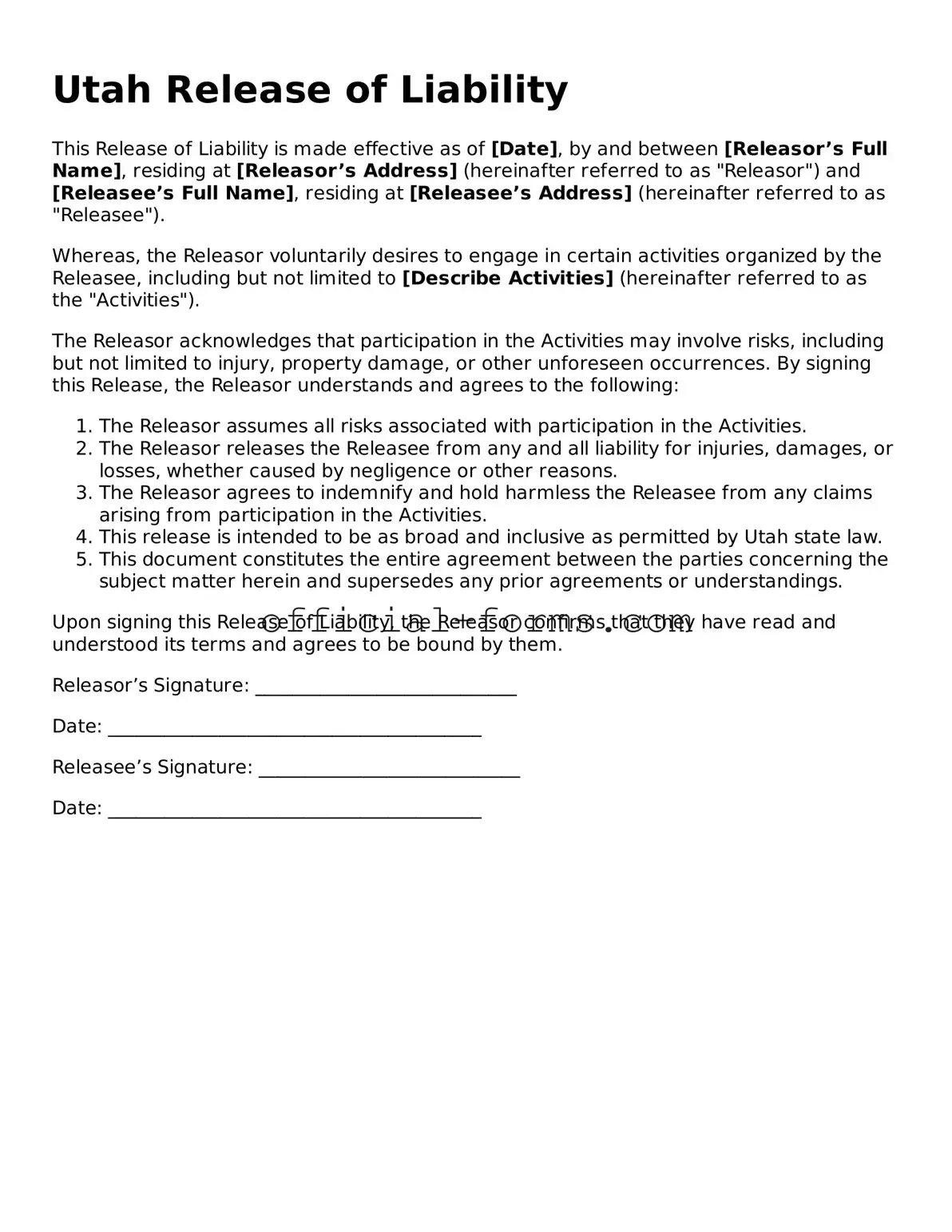Filling out the Utah Release of Liability form can seem straightforward, but many individuals make common mistakes that can lead to complications later. One frequent error is failing to provide complete and accurate personal information. It's essential to include your full name, address, and contact details. Missing or incorrect information can hinder the validity of the form.
Another mistake involves overlooking the specific activities covered by the release. The form should clearly outline the activities for which liability is being waived. If this section is vague or incomplete, it may not provide the intended protection. Participants should ensure that all relevant activities are explicitly listed.
People often neglect to read the entire document before signing. This oversight can lead to misunderstandings about the rights being waived. Taking the time to review the terms can prevent future disputes. Understanding what you are agreeing to is crucial.
Additionally, failing to date the form correctly is a common issue. The date is vital for establishing when the release takes effect. An incorrect or missing date can create confusion regarding the timeline of the agreement.
Many individuals also forget to include the signatures of all necessary parties. If the release involves multiple participants, each person must sign the form. Omitting a signature can render the document unenforceable.
Another mistake is not having the form notarized when required. While not always necessary, some situations may demand notarization for added legal protection. Check the specific requirements to ensure compliance.
People sometimes use outdated versions of the form. Laws and regulations can change, so it’s important to use the most current version available. Using an outdated form can lead to legal challenges down the line.
Failing to consult with a legal professional is another common misstep. While the form may seem simple, having legal guidance can clarify any uncertainties. A professional can help ensure that the form meets all legal standards.
Lastly, individuals often forget to keep a copy of the signed form for their records. Having a copy is essential for both parties in case any issues arise later. Always retain a signed version for your personal files.
By avoiding these common mistakes, individuals can ensure that their Utah Release of Liability form serves its intended purpose effectively and protects their interests.
